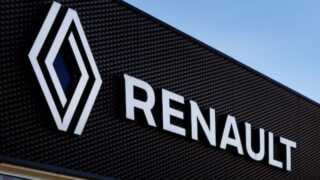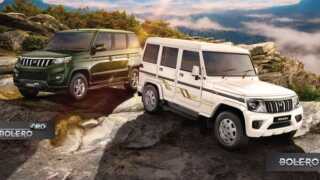Follow us today…
Road trips. They conjure up that golden, grease-smudged image of Route 66, overflowing ashtrays, gas station burritos, and miles of open road backlit by the setting sun. The great American tradition, the mobile proving ground where man, machine, and Waffle House hashbrowns meet. But here in 2025, things have shifted. And as one Jeep Wagoneer S EV owner recently discovered, road trips today demand less wanderlust and more Wi-Fi.
Jesse Barnes in the Jeep Wagoneer S EV Facebook group, took his Jeep Wagoneer S EV on a 1,400-mile weekend haul and came back with this thoughtful post, part trip report, part confessional, and part cautionary tale:
“What I learned after a 1400-mile weekend road trip: Planning is everything. ABRP is a great planning app, but a crappy navigation app (don’t subscribe to premium), bridge shadows trigger front anti-collision (happened 4 times to me), ADA on Jeep is very good as I was only involved in about %25 of the drive, Tesla chargers are superior to others, and with a 1 month subscription.
It paid for itself and saved me some money, it requires too many apps to find all chargers, on the last day I noticed a charger on apple maps that was not listed on abrp, plug share or free2move and the charger was at a very convenient location for my weekend, it could of saved me a lot of time.
While the trip across upstate New York was not bad to and from, the time I spent at my destination was altered because of taking an EV, I could of made it more convenient by staying at a hotel with a destination charger, but we prefer Airbnb’s and I doubt I would change that based on the vehicle we choose to take so will most likely not take the Wags on anymore major road trips.”
A cocktail of tech triumphs, dead ends, and a dash of buyer’s remorse. Jesse’s not alone. Fellow group member Adam Gardner chimed in, asking why A Better Route Planner didn’t cut it. He found it reliable, but Barnes explained the issue: it kept clinging to old locations and stalled on reroutes. Imagine trying to find your way home with a GPS that thinks you’re still at that Sheetz in Schroon Lake.
Charging, naturally, became the next big subplot. Barnes noted that Tesla’s Supercharger network was far superior, no surprise there. Thanks to the Magic Dock feature, his Wagoneer S was able to sip from the same electric trough as the Model Ys and Cybertrucks. Chuck Pierce was surprised: “You were able to use Tesla Superchargers with Magic Dock?” Yep, said Jesse, and they were plentiful. It’s a quiet revolution. Jeep didn’t build the chargers, but their vehicles can now use the best network in the U.S. (as long as you know where to look and have the right adapter or membership).
Jeep Wagoneer S EV Performance Specs, Charging Speed & Early Production Highlights
- Built on a mid-size BEV platform, the two-row Wagoneer S delivers 600 hp, 617 lb-ft torque, and a 0–60 mph in ~3.4 sec
- Charging: supports 20–80% DC fast charge in ~23 minutes using its 400 V architecture
- Wheelbase and exterior dimensions well-suited for midsize SUV class (specific numbers not widely reported), with a feature-packed 45″ digital screen layout
- As Jeep’s first BEV, early production volumes are limited; broader sales data not yet released, brandwide Wagoneer (ICE) sales are soft (13,616 all-year to date vs 29,843 a year ago)
Sometimes, it’s not the hardware that fails us. It’s the maze of interfaces and systems meant to guide us through. Robert Sterling took a more traditional view, questioning why Barnes didn’t just use the Wagoneer’s factory nav. “I charged twice from Chicago to Nashville,” he said. “No issues,” Barnes explained, the factory nav avoids Tesla chargers altogether. Jeep’s system prefers rest stop DC fast chargers that cost more than a Brooklyn cocktail.
Advertising
Barnes crunched the numbers and came away convinced: the extra two minutes using ABRP saved him money. A lot of it. But you have to know to go looking, and that’s the bigger problem. We shouldn’t need five apps and a Reddit thread to plan a simple road trip.
This disconnect isn’t unique to Jeep. Over on rivianforums.com, some Rivian drivers have ditched planning apps entirely in favor of Waze and prayer.
Why EV Owners Are Ditching Native Nav: Insights from Rivian & Ioniq Forum Threads
Even ioniqforum.com has users admitting that they’ve reverted to Google Maps and manual plug-share checks because native systems just don’t cut it yet. The truth? We’re still building the EV playbook in real time, and there’s no consensus on the best approach.
Technology didn’t completely let Barnes down. He praised Jeep’s Advanced Driver Assistance system, the Wagoneer S handled roughly 75% of the drive, keeping fatigue at bay. That’s not nothing. But he also pointed out a bizarre quirk: the collision warning system freaked out every time he drove under a bridge shadow. Four times.
A false alarm isn’t catastrophic, but it’s jarring, especially when you’re relying on a tech suite to make your trip easier, not more stressful. These are not failures of the vehicle, but they are reminders: we’re not fully autonomous yet. You still have to pay attention.
2024 Jeep Wagoneer S EV EPA Range: Falken vs. Pirelli Tires & Updated Estimates
- EPA-rated range for the 2024 model is 303 miles (Falken tires)
- With optional Pirelli tires, range drops to around 270 miles
- For 2025 updates, Jeep estimates a 294-mile range per charge
- Jeep’s official claims align with “more than 300 miles” range for the 2024 Wagoneer S
Despite all the hiccups, Barnes didn’t condemn the Wagoneer. He didn’t toss the keys or light a match. But he did come away with a decision: he’ll think twice before taking the Wagoneer on another long trip. Not because it’s a bad vehicle, far from it, but because his travel preferences (Airbnb, rural destinations, no Level 2 charger on-site) don’t mesh well with the current EV infrastructure. It’s a lifestyle mismatch. And sometimes, that’s all it takes to reshape how we use our vehicles.
We’re all figuring this out together. The road may be new, but the spirit, the chaos, the grit, the learning, is classic American motoring. And that’s what makes stories like Barnes’s worth telling.
Image Sources: Stellantis Media Center
Noah Washington is an automotive journalist based in Atlanta, Georgia. He enjoys covering the latest news in the automotive industry and conducting reviews on the latest cars. He has been in the automotive industry since 15 years old and has been featured in prominent automotive news sites. You can reach him on X and LinkedIn for tips and to follow his automotive coverage.
Follow us today…
Source: torquenews.com










